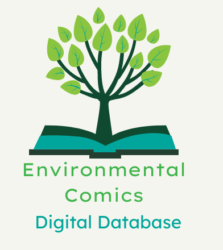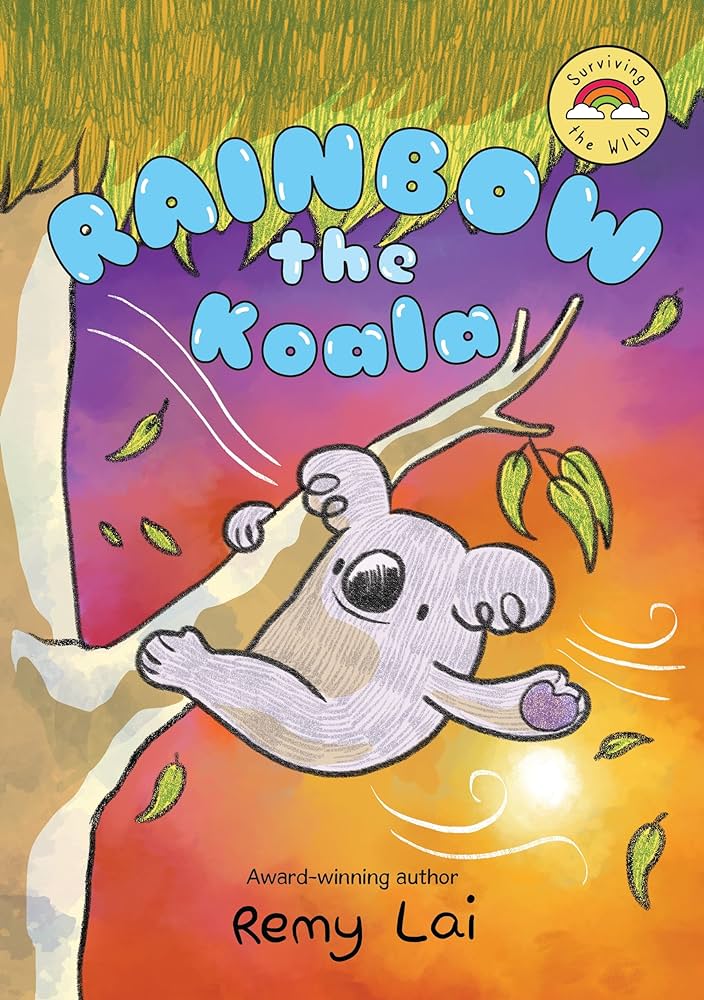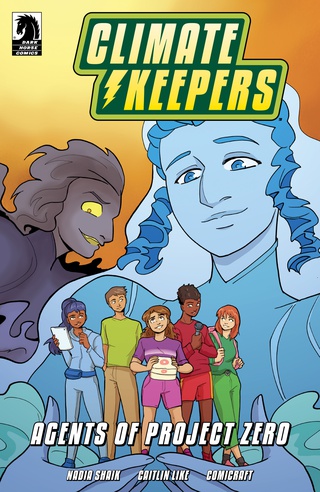“This valley appears immune to the disease! And to think all the botanists of the world have given up hope! I must go there, to find a cure!” — Mup’s father, Mup, p. 87.
| Creator(s) | Raea Gragg (author) |
| Publisher | Alexandria Gragg |
| Publication Date | 2020 |
| Genre | Fantasy, Fiction |
| Environmental Themes and Issues | Animal Rescue, Environmental Justice, Extinction, Fuel Extraction or Shortages, Habitat Destruction, Hostile Environment, Oil Spill, Plants |
| Protagonist’s Identity | Adrianna Theresa Machado, or “Mup”: A 6 year old girl with olive skin, presumably of Latinx heritage The comic features a multi-racial cast of characters, including the African Waasi and her family and the white CEO of Leopold Enterprises. |
| Protagonist’s Level of Environmental Agency | Level 5: High Environmental Agency and Activism |
| Target Audience | Middle Grade |
| Settings | Congo Rainforest |
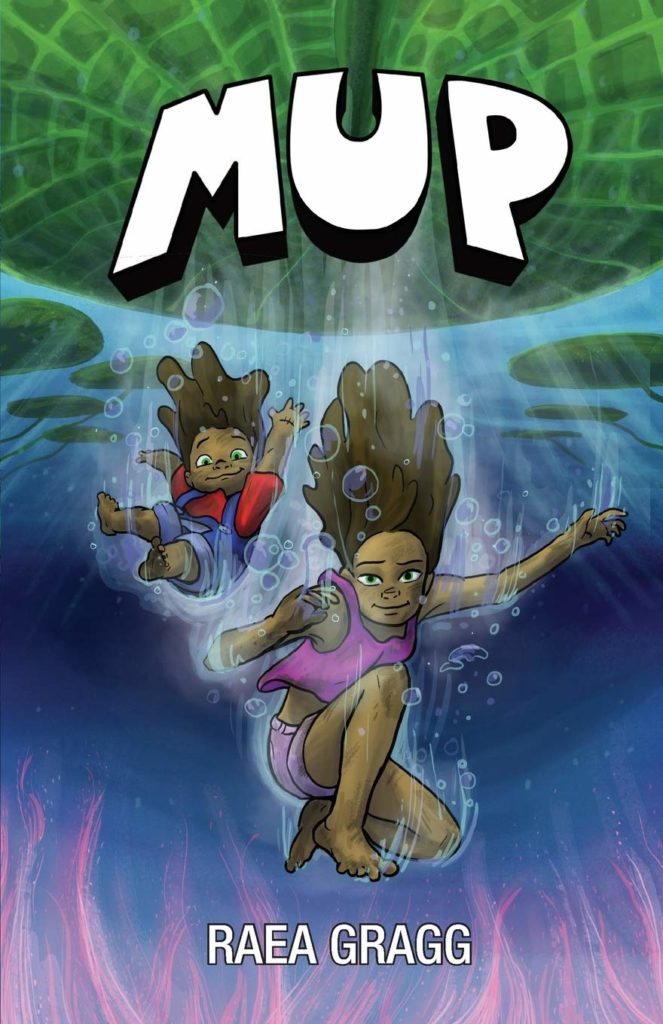
Environmental Themes
Raea Gragg’s debut graphic novel Mup centers on Adrianna Theresa Machado, or “Mup,” an imaginative six-year-old girl who lives with her botanist father and has a passionate love of dinosaurs. She carries her stuffed “Girafftatian souropod” Gertie everywhere, and in the comic’s opening scene, she wishes on a falling meteor that she will find a real dinosaur. At school, however, Mup struggles to fit in with the other girls, who only dream of leaving childhood behind and becoming popular teenagers. By contrast, Mup fears growing up, declaring, “I don’t want to change. I don’t want to forget who I am” (Gragg 26). This existential crisis soon takes on new urgency when Mup discovers a glowing portal at the base of a tree. The portal transports her ten years in the future, where she meets her sixteen-year-old self, a beautiful teenager who now goes by Arianna and wants to forget her childhood. Additionally, Mup discovers that a contagious disease has wiped out all of the plant life, reducing the world to a barren wasteland. Arianna informs Mup that the mass extinction is her fault, saying, “Let me… remind you… you wished upon a star. Well that star–a meteor–crashed and poisoned the planet. It ignited the spread of the Black Dread” (Gragg 66). While the girls’ father has spent the last decade fruitlessly trying to find a cure for the disease, Arianna only cares about fitting in with the other teenage girls.
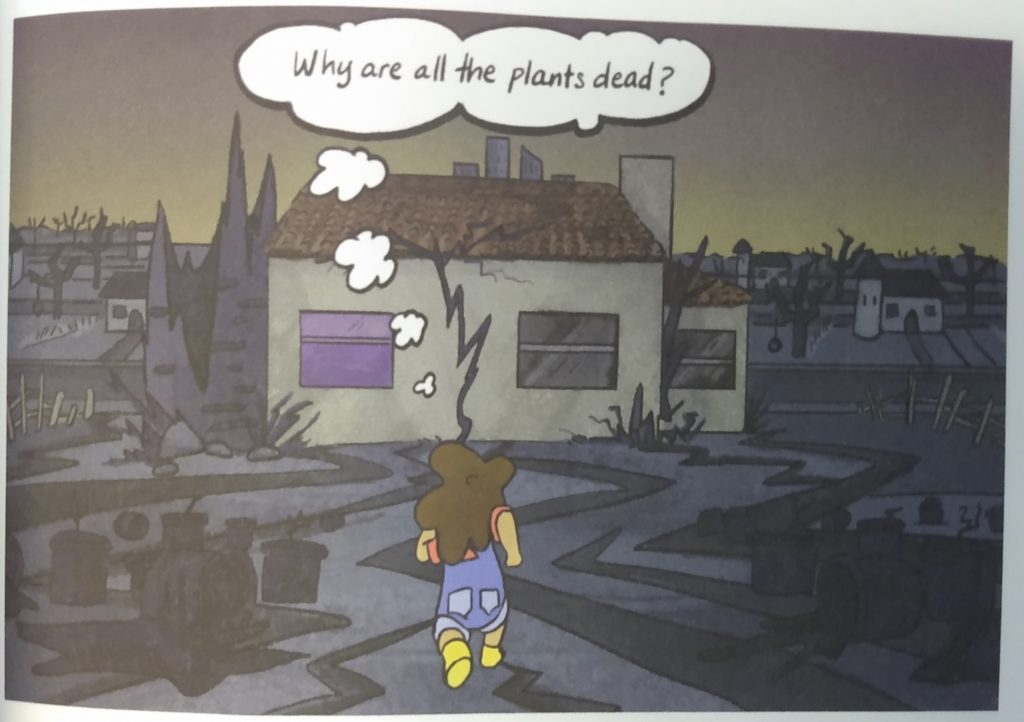
Shortly after Mup’s arrival in the future, her father discovers a small, plant-filled valley in the Congo Rainforest while studying satellite maps. He takes Arianna and Mup–who has stowed away in her older counterpart’s backpack–on a journey to the rainforest to search for a cure to the Black Dread. There, they meet Waasi, a twelve-year-old African girl, and her rescued bird, Dirtybird. Waasi swears that she has seen the plant-filled Forgotten Forest and Mokele-mbembe, the dinosaur that guards the valley. Waasi offers to guide Arianna, her father, and the hidden Mup to the forest. However, their journey is interrupted when they are captured by the white CEO of the oil extraction company Leopold Enterprises, Waasi’s former employer. The CEO deems the group trespassers, declaring that “this land… belongs to me” (Gragg 166, emphasis in original). Waasi responds, “This land belongs to my people… who have lived here for centuries!” The CEO dismisses her claim, saying, “Let me remind you: this wasteland–and your people–work for me now” (Gragg 167). This exchange highlights the links between colonialism, environmental injustice, and the fossil fuel industry as the villainous CEO exploits both the land and the people who inhabit it.
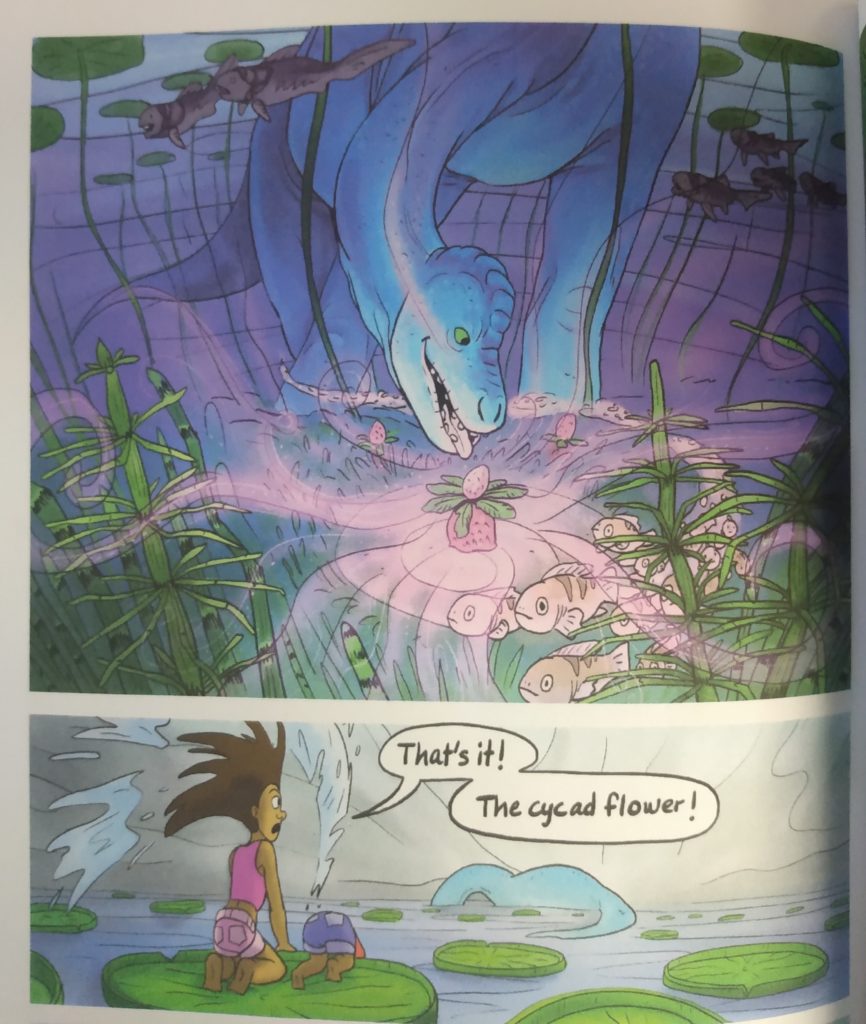
Like Waasi and Mup’s father, the CEO also seeks the Forgotten Forest, though his motives are decidedly less altruistic. He explains that “underneath the forest lies the largest oil deposit in the world. A veritable fortune awaiting… extraction.” Disgusted, Mup’s father asks, “And you’re willing to destroy the last forest in the world to do it?” The CEO responds, “Yes, money doesn’t grow on trees! … Caring is economically inefficient” (Gragg 178-79). Before the CEO can execute his nefarious plan, Arianna and Mup manage to escape from the corporation’s clutches. Fleeing across the wasteland, they fall into a river that carries them to the valley, where they encounter Mokele-mbembe and a cycad flower that appears to sustain plant life. Unfortunately, Leopold Enterprises tracks the girls to the forest and begins to tear down the trees. However, Waasi manages to shut down the corporation’s machinery, and she works together with Arianna and Mup to capture the CEO and halt the habitat destruction. The rainforest’s native inhabitants resolve to find new, more sustainable ways to earn a living, with Waasi stating, “I’m going to make planes powered by renewable energy, not fossil fuel!” (Gragg 259). Additionally, Mup’s father uses a cycad flower that grows in the forest to cure the Black Dread. Arianna and Mup reconcile their differences, and Mup travels back to her own time, where she finds that their actions have successfully averted the Black Dread. The comic ends with the older Arianna overcoming her fear of growing up, reflecting, “Well, it looks like everything changes after all. And that’s ok” (Gragg 277). Alongside the positive coming-of-age narrative, the comic emphasizes youth environmental agency, with Mup, Arianna, and Waasi playing pivotal roles in defeating Leopold Enterprises and solving the Black Dread.
